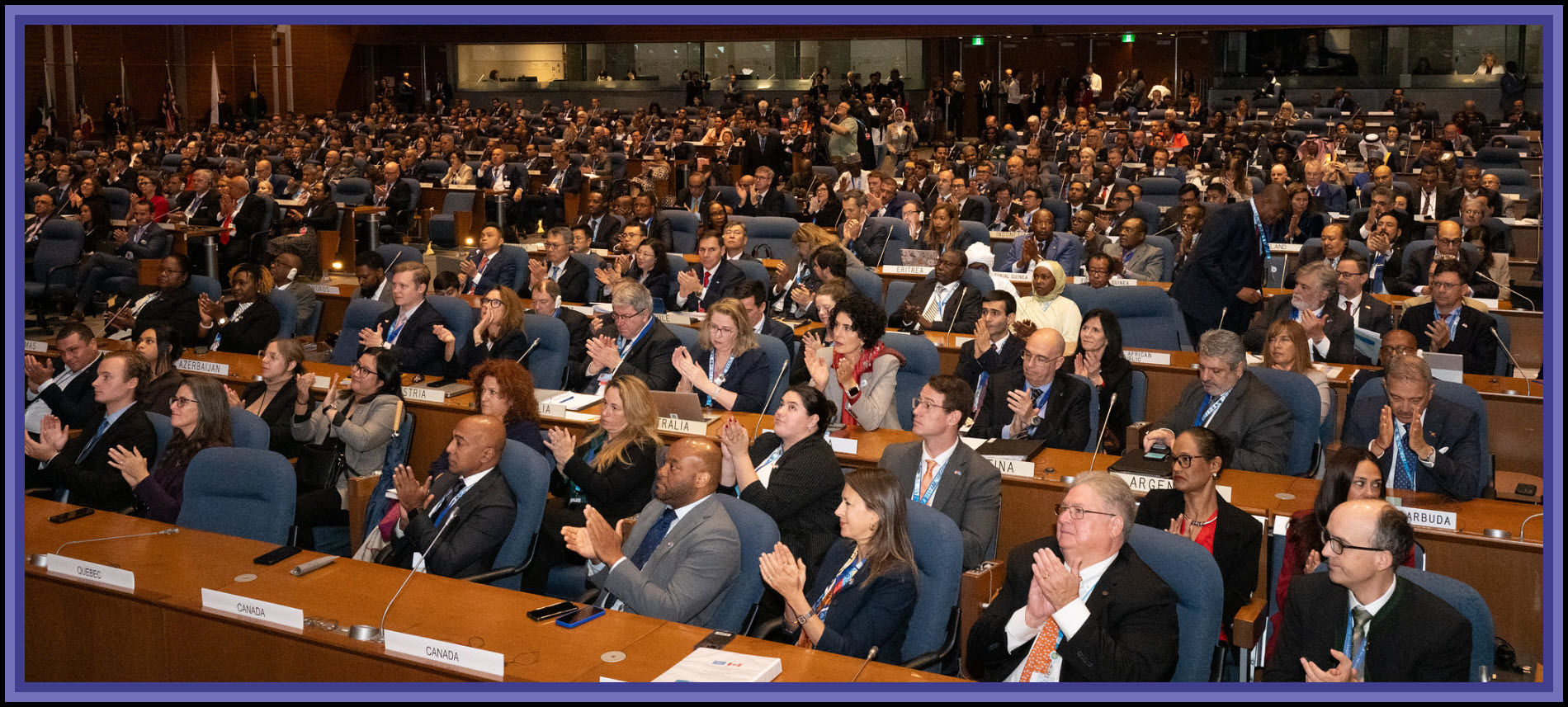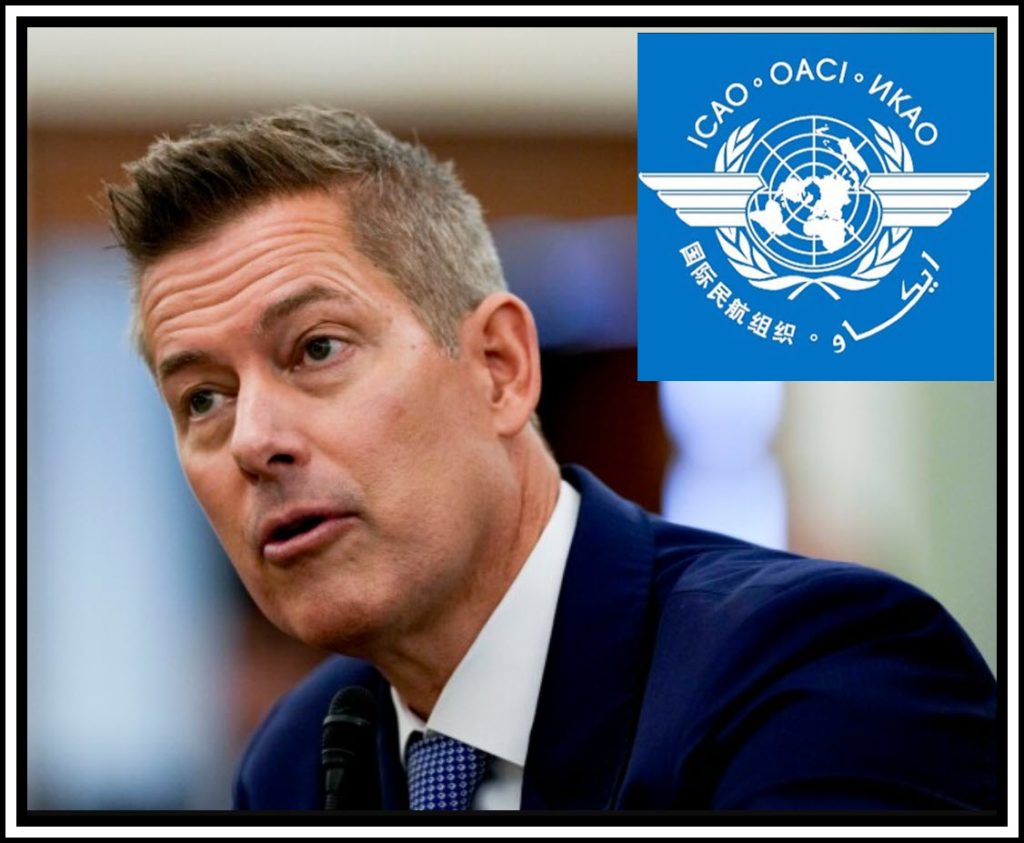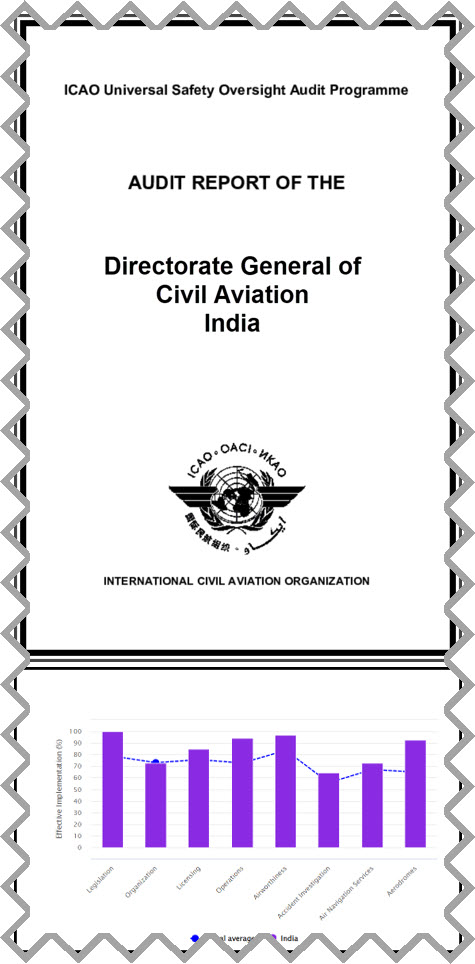ICAO award for India’s DGCA safety improvements BUT post AI crash domestic criticism DISAGREES?

Yesterday, in Montreal, the International Civil Aviation Organization (ICAO) held its opening ceremonies. To set the tone of this Triannual Convocation, ICAO Council President Salvatore Sciacchitano laid out an ambitious vision and specified that this UN special agency should “safeguard growth in underserved markets by transforming aviation safety, security and sustainability.”
As one of the Founding Members and as the country with largest financial support, an early presentation was delivered by DOT Secretary Duffy. He sternly intoned a different theme:
“…I am here today on behalf of President Trump to deliver a hard truth. It is the view of the United States that over the years this body has extended itself far beyond its proper mandate– wasting critical resources on social programs or climate financing initiatives work that has nothing to do with the safety, security, and efficiency of the global air transportation system…
While this was the wrong approach, the Secretary General and his team have made progress in reforming the Organization in the wake of his predecessor’s disastrous leadership.
But there is more work to be done to streamline and optimize the Organization for the future.”
To reinforce his macro theme, the PRESIDENT SCIACCHITANO was introduced under the ‘NO COUNTRY LEFT BEHIND’ initiative and awarded the DIRECTORATE GENERAL OF CIVIL AVIATION OF INDIA a CERTIFICATE FOR ITS PROGRESS IN ESTABLISHING AN EFFECTIVE AVIATION SAFETY OVERSIGHT SYSTEM.
As the following article makes clear, India regarded the Council President’s recognition as a global seal of approval after the Air India Flight 171 disaster. The ICAO recognition endorses the DGCA’s competence to regulate the country’s expanding airline operations and its aerospace companies whose futures are seen as economic engines for India.
This “improvement” cited by the award is backed by the ICAO USOAP and the FAA IASA [1]both of which found the DGCA in compliance with international standards.
The people of India might well be confused because their court and press have made the following damning observations:
- Aircraft Maintenance Failures: Planes were found operating with worn tires and unresolved mechanical defect Safety systems—like locking faulty thrust reversers—were routinely ignored.
- Poor Oversight: Repeated technical issues on the same aircraft suggested ineffective monitoring and inadequate rectification by DGCA inspectors.
- Compromised Passenger Safety: Life vests were unsecured, defect alerts went unlogged, and pre-flight checks were inconsistently performed.
- Conflict of Interest in Crash Investigation: The Supreme Court criticized the DGCA for selectively releasing parts of the crash report that blamed pilots while withholding critical data. Media and legal experts called for an independent probe, citing a conflict of interest since DGCA officials were part of the investigating team.
- Neglected Infrastructure: Runways with faded markings, outdated flight simulators, and unserviceable ground equipment were flagged at top airports like Delhi and Mumbai.
The DGCA Internal Findings acknowledged serious deficiencies like:
- Aircraft flown with unrectified defects and worn-out tires
- Outdated simulator software used for pilot training
- Unrecorded system-generated alerts in technical logbooks
- Obstruction-limitation data at airports not updated for years
HARDLY AWARD-WINNING REVIEWS.
What this dissonance highlights is that these independent audits may have some invisible biases impacting the conclusions. Perhaps the “No COUNTRY Nation Behind” campaign needs a “hero” and India provides a DGCA to emulate? The US needs a cornerstone of democracy in South East Asia , particularly as a counterweight to the PRC; so, granting the DGCA a Category 1 status provides greater amity?
Perhaps it is time to reconsider the USOAP and IASA dual reviews? They both are merely report cards that find that enhanced safety performance is needed. BUT, the outside team returns to their offices and the deficient DGCA has to try to figure how to meet the standards- amend rules, increase their independence, hire a higher quality of technical experts, up the intensity of its internal Safety Culture… Those aspects of their organization are hard to self-evaluate and frequently need an independent expert to confirm that dollars, independence and hiring authority are needed. Finding fault is easy to do; finding answers to problems likely will be expedited by such help.
India Honoured With ICAO Council President Certificate for Aviation Safety Progress
India has received the ICAO Council President Certificate at the 42nd ICAO Assembly in Montreal, recognising its progress in aviation safety oversight and effective implementation of international aviation standards.
India receives ICAO Council President Certificate for progress in aviation safety oversight
New Delhi: India has been awarded the prestigious ICAO Council President Certificate for ITS PROGRESS IN ESTABLISHING an effective aviation safety oversight system. The recognition was presented at the 42nd Session of the ICAO Assembly in Montreal, Canada, on Tuesday.
Directorate General of Civil Aviation (DGCA) chief Faiz Ahmed Kidwai received the certificate on behalf of India, an official statement confirmed.
“In recognition of your State’s progress in establishing an effective safety oversight system and improving the effective implementation (EI) of applicable International Civil Aviation Organization (ICAO) Standards and Recommended Practices (SARPs), your State has been selected to receive an ICAO Council President Certificate,” the statement said.
The award was presented by ICAO Council President Salvatore Sciacchitano.
The ICAO COUNCIL PRESIDENT CERTIFICATE was introduced under the ‘NO COUNTRY LEFT BEHIND’ initiative and is granted to nations that demonstrate significant improvement in aviation safety oversight. Eligibility is determined based on results from the ICAO Universal Safety Oversight Audit Programme’s Continuous Monitoring Approach activities.
The DGCA achieved its highest-ever Effective Implementation (EI) score of 85.65% in an ICAO audit conducted in November 2022, a sharp jump from 69.95% in 2018. This improvement catapulted India into the list of the world’s top 50 countries in aviation safety oversight for the first time.
Back in 2018, India ranked 102nd, below countries such as Nepal (101st), Pakistan (100th), Bangladesh (94th), and Sudan (89th). After the 2022 audit, India now stands at the 48th spot, ahead of major aviation markets like China (49), Israel (50), Turkey (54), Denmark (55), and Poland (60).
This improved safety ranking is EXPECTED TO EASE THE PATH FOR INDIAN CARRIERS TO EXPAND INTERNATIONALLY. With Air India (Tata Group) and IndiGo announcing aggressive global expansion plans, the higher ranking will help reduce scrutiny of Indian aircraft at overseas airports. In contrast, airlines from countries with weaker aviation safety records often face frequent surprise checks abroad.
[1] FAA International Aviation Safety Assessment (IASA) audit of India’s Directorate General of Civil Aviation (DGCA) was conducted from October 25–29, 2021, with follow-up consultations in April, July, and September 2022. The final determination was communicated on April 12, 2023





